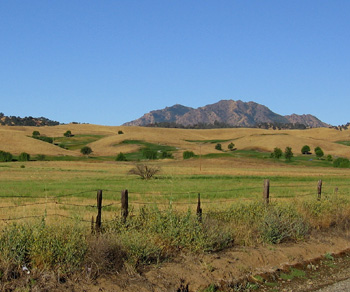Animal Services
Related Links
Contact Info
Brian Addington
Acting Chief of Police
Catriona Cottle
Acting Animal Services Manager
Location
Antioch Animal Services
300 L Street
Antioch, CA 94509
Tel: (925) 779-6989
Antioch Wildlife
 Tree-lined and ivy-covered fences are attractive to those of us who live in this area. They are also attractive to local urban wildlife.
Tree-lined and ivy-covered fences are attractive to those of us who live in this area. They are also attractive to local urban wildlife.
Urban growth in Antioch has led to the loss and disturbance of hundreds of acres of wildlife habitat. While some wild animals have migrated to quieter, more remote areas, others (especially raccoons, opossums, squirrels, skunks, and other rodents) have learned to adapt and thrive alongside humans.
Wild animals are most likely to become a nuisance if they are provided with an attractive environment. These attractions include safe nesting areas and available food and water. However, effective steps can be taken to prevent these animals from making your home their home.
Prevention
Favorite nesting sites for wild animals include the attic and crawl space under a house. Before an animals moves into your home, take the following preventive measures:
Check your property regularly to ensure that screens barring entrance to your home or basement are intact. Cap chimneys with hardware cloth bolted to the masonry. Securely fasten heavy screening or metal hardware cloth over vents and dryer exhaust openings. Stuff coarse steel wool into gaps between pipes and outside walls.
Eliminate access routes by pruning tree branches overhanging the roof. Remove ivy leading from trees to roof, or wrap 18-inches or wider metal guards around tree trunks five or six feet from the ground. Keep pet doors closed at night, and install an inside latch to keep them locked.
Removal
When animal nesting or habitation is discovered, many excellent solutions to your unwanted occupancy problem exist. However, unless you remove whatever is attracting it, unwanted wildlife will continue to visit.
Indoors or Under the House
If an animal has taken up residence in an attic or crawl space, block off all entrances accessible to the animal except one. Place a radio near the entrance and play music loudly during the day. Place dishes of ammonia-soaked rags near the same spot. This should annoy the animal enough to convince it to leave within a day or two.
Place a piece of cloth (such as an old T-shirt) with your scent near the resting area. Nesting mothers are concerned with the safety of their young, and human scent will encourage her, within a week or so, to relocate her family.
Anytime you think there are nests of young, be sure all babies and the mother have relocated before sealing up all access points. Otherwise, babies will starve, or mothers will return and destroy the seal to retrieve their young.
Outdoors
If you have pets, bring their food and water indoors at night. Clean-up leftover food, seeds, and dropped or discarded fruits and vegetables. Secure trash containers with weighted lids, or secure the lids with straps or chains attached to the handles.
To prevent raccoons or other wildlife from digging in your garden, sprinkle cayenne pepper around the perimeter. Soak rags in ammonia or bleach and place them in bowls or tie them to posts around the garden. This should deter uninvited animal visitors from foraging for grubs or insects. Some success has been achieved using motion detector lights.
Secure outdoor fish ponds with a wooden cover, or horizontally submerge wire mesh around the circumference of the pond. Attach the outside edges of the mesh to the edge of the pond, leaving the inside free. Fish then have the center of the pond to themselves, and animals cannot reach over the wire, because it provides an unstable surface on which to perch.
Protect Your Pets
As a rule, urban wildlife is not aggressive. However, animals will defend their young and their territory, so it’s a good idea to keep your pets indoors at night while many wild animals are out.
Rabies is a potential threat in this area. Because of this and other diseases such as distemper, it is important to keep your pet vaccinations up to date, to protect pets from diseases that can be prevented by immunization. Please avoid direct contact with wildlife, especially if they seem sick, injured, or oddly unafraid.
If you or your pet are bitten or injured by wildlife, obtain appropriate medical care and contact Animal Services for advice.
Humane Trapping
Humane trapping is a short-term solution, and never the best option. Relocating a wild animal without a permit is illegal. In addition, a wild animal becomes stressed and frantic when trapped, and might injure itself trying to escape. Trapping also separates mothers from babies who cannot survive without the mother’s care. Animal Services strongly discourages the live trapping of wildlife.
If you choose to trap, you must be aware of the following trapping guidelines:
- California State Fish and Game requires trapped wild animals that appear healthy to be released in the immediate area.
- Each trap should be inspected by Animal Services to ensure it is legal, safe and humane.
- Trapped animals must be transported to Animal Services or released within 15 hours of capture.
- Persons trapping animals arc responsible for protecting them from inclement weather, heat, teasing or abuse.
- Animals that are trapped in excess of 12 hours must be provided with water.
- Traps should not be set Friday or Saturday evenings or the evening before a major holiday.
- Persons who call Animal Services for pick-up of animals will have to pick-up their trap at the shelter.
- Traps must be marked with the name and telephone number of the person trapping animals.
- Non-targeted animals or animals wearing identification shouid be released immediately.
If you have tried the above options, as a last resort, you might be able to get additional assistance from an Animal Control Officer.


